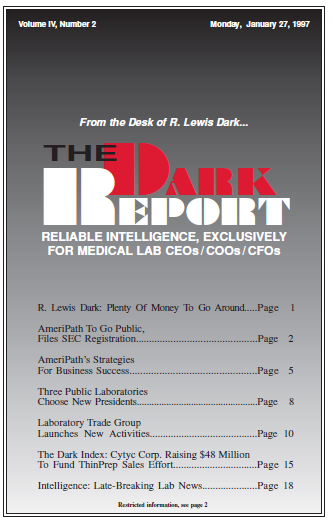CEO SUMMARY: Two fascinating aspects about the AmeriPath story are: 1) the strategy to boost share values; and 2) the strategy to develop profitable pathology revenues. With managed healthcare transforming pathology at an astounding rate, will AmeriPath succeed in both strategies? DURING THE LAST YEAR, intense curiosity swirled about AmeriPath, Inc. Pathologists heard plenty of …
AmeriPath’s Strategies For Business Success Read More »
To access this post, you must purchase The Dark Report.


